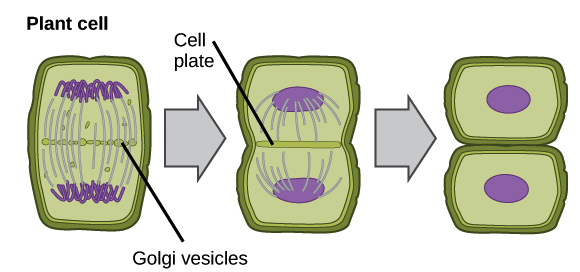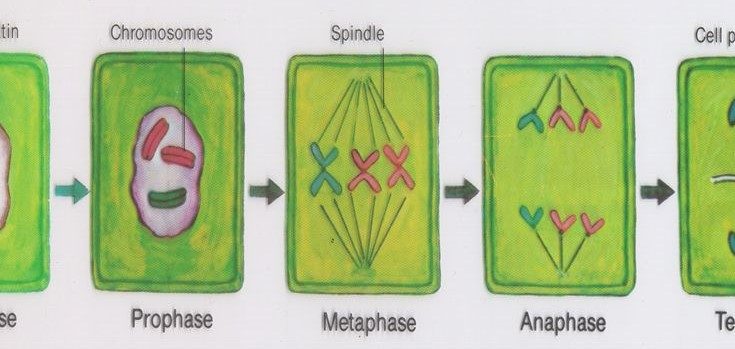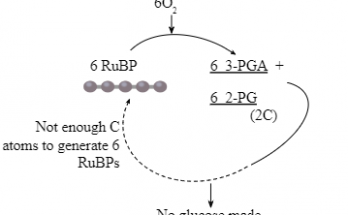Mitosis in Plant
Mitosis is an Important process in the growth and development of plants. Mitosis plays an important role in the formation of new cells to support tissue growth, repair and reproduction.
In plant cell mitosis the replicated genetic material (in Interphase) in the parent cell is separated then divided into the two daughter cells.
The process of the plant cell mitosis is important for various plant functions like growth and development of roots, stems, leaves and the production of flowers and seeds.
Also Check – Mitosis In Plant Cell and Animal Cell- Differences and Similarities
Who Discovered Mitosis in Plant Cell
Mitosis was first observed in plant cells by German biologist Walther Flemming (1843–1905). He is the pioneer of Mitosis research.
Mitosis in Plant Cell
Mitosis in plant cells is similar to mitosis in animal cells, with a few notable differences due to the presence of a cell wall and specialized organelles such as chloroplasts and vacuoles in plant cells.
Mitosis in plant cells is similar to mitosis in animal cells, but with some key differences, including the formation of a cell plate instead of a cleavage furrow during cytokinesis, and the presence of a cell wall that needs to be modified during cell division. These notable few differences reflect the unique structure and function of plant cells compared to animal cells that are- presence of a cell wall and specialized organelles such as chloroplasts and vacuoles in plant cells.
Also check – Parts of Plant Cell
Also Check – Mitosis – Frequently Asked Questions and Answers
Mitosis in Plant Cell Diagram

Stages of Mitosis in Plant Cells
The stages of mitosis in plant cells are as follows –
- Prophase
- Metaphase
- Anaphase
- Telophase
- Cytokinesis
Also Check – Where does Mitosis and Meiosis occur ?
Prophase in Plant cell
Prophase is the first stage of mitosis in both plant and animal cells. In the stage of prophase, several changes occur within the nucleus of the cell, preparing the cell for subsequent stages of mitosis.
The key events that occur during prophase in plant cells are as follows –
Chromosome condensation
As the cell prepares for division, the chromatin inside the nucleus condenses and becomes visible under a microscope. This condensation allows the genetic material to be more easily separated during subsequent stages of mitosis.
Formation of the Spindle apparatus
In plant cells the Spindle Apparatus is made up of microtubules. The spindle fibers begin to form in the cytoplasm of the plant cell during prophase. Spindle fibers extend from opposite ends of the cell towards the center and attach to the chromosomes via kinetochores located at the centromere region.
Disappearance or Breakdown of Nuclear envelope
As the cell prepares for division, the nuclear envelope breaks down and the chromosomes become exposed to the cytoplasm.This allows the spindle apparatus to interact directly with the chromosomes.
Nucleolus disappears
Nucleolus is responsible for producing ribosomes disappears during the prophase. This makes the cell to redirect its resources towards cell division.
Preprophase Band
In plant cells a unique structure called the preprophase band forms before the onset of prophase. Preprophase Band consists of microtubules arranged in a ring-like structure around the cell’s circumference. This band helps to determine the plane of cell division and is involved in the formation of the cell plate during cytokinesis.
Also Check- Cell Organelles – The Complete Guide
Metaphase in plant cell
Metaphase is the stage of mitosis during which the chromosomes line up along the equator of the cell, ready to be separated into two daughter cells.
The key events that occur during Metaphase in plant cells are as follows –
Chromosome Alignment
In metaphase the chromosomes align themselves at the equator of the plant cell forming a single plane called the metaphase plate. The spindle fibers attach to the kinetochores of the sister chromatids and exert tension to pull the chromosomes towards the center of the cell.
Spindle fiber formation
The spindle fibers are fully formed and attached to the centromeres of the chromosomes in metaphase . In plant cells the spindle fibers originate from the opposite poles of the cell and the polar microtubules overlap and interlink at the center of the cell.
Chromosome structure
In the metaphase stage of mitosis the chromosomes in the plant cell are fully condensed and visible under a microscope. Each chromosome consists of two identical sister chromatids held together by a centromere.
Checkpoint
In the process of metaphase the cell undergoes a spindle checkpoint to ensure that all chromosomes are properly attached to the spindle fibers before proceeding to anaphase. If any chromosomes are not properly attached, the cell cycle is arrested to prevent the formation of daughter cells with an incorrect number of chromosomes.
Anaphase in Plants Cell
Anaphase is the stage of mitosis during which the sister chromatids of each chromosome are separated and pulled to opposite poles of the plant cell by the spindle fibers.
The key events that occur during Anaphase in plant cells are as follows –
Chromosome Separation
In anaphase stage the sister chromatids of each chromosome separate at the centromere and are pulled towards the opposite poles of the cell by the spindle fibers.
Spindle fiber Shortening
Spindle fibers shorten during anaphase stage by pulling the chromosomes towards the opposite poles of the cell. The kinetochore microtubules shorten and the polar microtubules slide against each other and push the poles apart.
Chromosome movement
Spindle fibers pull the chromosomes towards the opposite poles of the cell and the chromosomes move to the ends of the cell becoming more elongated in shape.
Nuclear envelope formation
As the chromosomes move towards the opposite poles of the cell the nuclear envelope begins to form around each set of chromosomes.
Cell plate formation
In plant cells the cell plate starts forming during anaphase. The cell plate that began forming in anaphase continues to grow and fuse with the existing cell wall which will divide the cell into two daughter cells in the process of cytokinesis.
Also Check – 7 Important Difference Between Mitosis and Meiosis
Telophase in plant cell
The key events that occur during Telophase in plant cells are as follows –
Chromosome Decondensation
In the phase of telophase the chromosomes begin to decondense and become less visible under the microscope. The chromatin fibers begin to uncoil and the chromosomes are no longer distinct structures.
Nuclei Formation
Two daughter nuclei form at opposite poles of the cell in the telophase stage .
Nuclear envelope formation
The nuclear envelope forms around each set of chromosomes at the opposite poles of the cell in the telophase stage. The nuclear envelope is derived from the rough endoplasmic reticulum. It encloses the genetic material in the nucleus.
Nucleolus formation
The nucleolus, which is responsible for the production of ribosomes, reforms in each nucleus during the telophase stage. The nucleolus is composed of DNA, RNA, and protein.
Cytokinesis completion
In plant cells cytokinesis is completed during telophase, as the cell plate that formed during metaphase and anaphase grows and fuses with the existing cell wall . It separates the cell into two daughter cells.
Interphase Begins
Completion of telophase stages is the end of the mitosis and the return of the cell to interphase. The chromosomes have been separated, the nuclear envelope and nucleolus have re-formed and it’s ready for DNA replication and cell growth.
Cytokinesis in Plant cell
In Cytokinesis the cytoplasm and organelles are divided into two separate daughter cells.
In plant cells cytokinesis is different from animal cells due to the presence of a cell wall. It involves the formation of a new cell wall to separate the two daughter cells.
In the process of cytokinesis in a plant cell the structure called the cell plate which forms during telophase continues to expand and grow outward towards the plasma membrane.

The key events that occur during Cytokinesis in plant cells are as follows –
Formation of the Cell Plate-
- In cytokinesis the Golgi apparatus in the plant cell begins to produce vesicles containing cell wall components like cellulose and hemicellulose.
- These vesicles migrate to the center of the cell, where they fuse together to form a structure called the cell plate.
- The cell plate gradually grows outwards towards the cell membrane and eventually divides the cell into two daughter cells.
Expansion of the Cell Plate
- As the cell plate grows it pushes against the existing cell wall causing the cell to elongate.
- At the same time the microtubules and actin filaments help to guide the growth of the cell plate towards the edges of the cell.
- As the cell plate expands it fuses with the existing cell membrane and effectively divides the cytoplasm and organelles of the original cell into two separate daughter cells.
Cell Wall Formation-
- Once the cell plate has fully expanded and fused with the cell membrane it begins to transform into a new cell wall that separates the daughter cells.
- This process involves the deposition of additional cell wall components like lignin and pectin, as well as the strengthening of existing cell wall structures.
Separation of Daughter Cells-
- Finally the two daughter cells are fully separated from each other and the cell wall is formed.
- The cells can now continue to grow and develop independently of each other.
Did you find this article helpful? We’d love to hear your thoughts and suggestions in the comments!


One Comment on “Mitosis in Plants Cell – How Plant Cells Divide from 1 to 2 !”